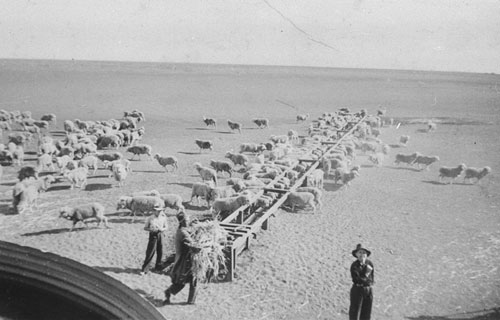Natural disasters
Australia is famously a land of ‘droughts and flooding rains’. These weather extremes can be devastating to communities across the country, but are particularly heartbreaking for those on the land. Tropical cyclones will destroy acres of crops in minutes, drought kills sheep and cattle slowly and cruelly, and floods and fire sweep through the land ruining everything in their path. The economic impact of weather events on agricultural and pastoral productivity can be immense.
Farmers often can’t do much to prevent these climactic events, but they do need to manage their land and resources carefully to attempt to minimize the damage caused by the weather.
Although Australia is probably more famous for drought, it is actually flooding which is the most damaging natural disaster in the country. Floods cause the most damage to land, property and have been responsible for nearly 2,500 deaths since 1790. Other costly disasters are tropical cyclones and severe storms, both of which can contribute to flooding – often in tropical areas. A recent example of a cyclone which affected a particular rural industry very badly was Cyclone Larry. It hit Queensland in 2006 ruining thousands of hectares of banana plantations and pushing the price of bananas up by around 300%.
The Queensland floods of 2010-2011 and the New South Wales and Victorian floods of early 2012 are other examples of recent devastating events, but flooding has been a feature, particularly of rural life, for generations. In 1955, the Hunter Valley region around Maitland flooded spectacularly; killing thousands of head of stock and fourteen people lost their lives.
> View a selection of images of floods in rural Australia
> Read recollections of the famous 1890 floods in Bourke, NSW, via the Library's catalogue ![]()
Bushfires and drought are arguably Australia’s most ‘iconic’ natural disasters, although both have been a natural part of the Australian environment for thousands of years. Fire, in particular, has been harnessed by Indigenous people to encourage new growth and the development of grassland areas to attract game. This practice is known as firestick farming. After European settlement, farmers also use fire to their advantage in land clearing and back burning. However unplanned bushfires can have devestating consequences, and cause widespread damage to buildings, fencing and livestock.
> See posters promoting bushfire safety during the 1940s
It is thought that severe drought affects some part of Australia about once in 18 years, although natural climate and rainfall variation means that around three years in ten will be drier than average. Severe droughts almost never affect the whole country at once, but those areas which are affected might stay in drought for anywhere between around two and nine years. The drought which caused the most dramatic stock losses was the Federation drought which occurred between 1895 and 1903 when Australia lost half its sheep and almost half its cattle to famine. Again in 1911, a five year drought began which killed almost 20 million sheep. Between 1965 and 1967, wheat harvests were 40 per cent lower than usual, and the 1991-1995 drought cost the Australian economy around $5 billion in lost rural production.
> See a selection of images showing the devestating affects of drought
It is a credit to the ongoing resilliance and determination of the Australian farmer, that they survive all manner of harsh conditions, weather extremes and natural disasters.

Photograph. At Work and Play collection - 06666




